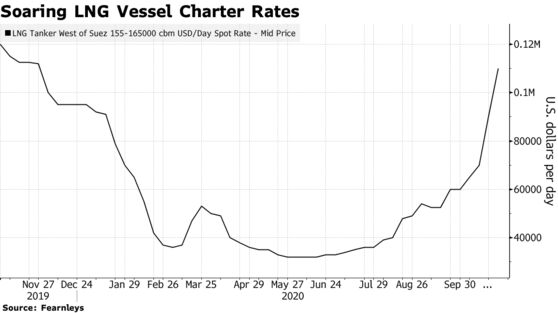Ships carrying cargoes around the world are waiting for days to pass through the Panama Canal, as pandemic-hit staffing caused congestion at the key pinch point.
Long waiting times are affecting shipments of liquefied natural gas and liquefied petroleum gas from the U.S. Gulf Coast to Asia, according to people with direct knowledge of the situation.
The Panama Canal is a crucial waterway for cargoes from the U.S., the fastest growing LNG supplier, to reach markets in Asia, the biggest consumer. Delays coupled with soaring charter rates may affect economics of supplies from the U.S. into Asia and force cargo owners to choose alternative routes.
The delays stem from traffic congestion as well as the Covid-19 pandemic reducing resource capacity, the people, who asked not to be identified said.
The Panama Canal Authority denied that even vessels with booked slots are experiencing delays, saying waiting time has increased only for vessels that arrive without a reservation.
“Due to a combination of seasonal fog, higher-than-average arrivals, and added Covid-19 safety procedures, the Panama Canal has seen an extended waiting time for vessels that arrive at the waterway without a reservation in recent days,” the Panama Canal Authority said in an emailed statement.
“Vessels that book transits for a particular date continue to have transit certainty for that date. This has been true for over 99% of transits historically and remains true despite the pandemic,” the authority said.
In the LPG market, logistical delays suffered by Asia-bound tankers prompted a spike in regional prices as buyers sought alternative supplies, two traders who asked not to be identified said. The disruption to flows coincided with seasonal demand from Northeast Asian buyers in South Korea, Japan and China during the year-end winter period.
Delays for LPG loadings from the U.S. to Asia have occurred for the past few weeks, with waiting time for non-booking slots of as much as eight days.
Delays
The Flex Aurora liquefied natural gas carrier waited for nine days to pass through the canal for a passage that typically takes less than a day. The tanker approached Panama Canal on Oct. 15 and entered it northbound Oct. 24. The vessel is now loading at Cheniere Energy Inc.’s Corpus Christi plant in Texas, according to ship-tracking data on Bloomberg.
Shipping rates for spot LNG vessels are already surging with reduced availability of spare vessels as delays mean tankers are on journeys for longer.
With coronavirus cases surging across the country, the Panamanian Ministry of Health imposed lockdowns and restrictions, limiting the number of workers at the canal, FGE said in a note. There are also more stringent checks and additional procedures for transiting vessels to curb the spread of the disease.
“With these developments coinciding with an uptick in seasonal demand for canal transits, it could take some time before delays start to ease,” the note said.

The Canal has adjusted its operations to raise daily transits from 32 to 37 on average, according to the statement. Transits are up from 30 in July, and 28 in June and May, when traffic was down because of the pandemic.
“The Panama Canal anticipates this is a short-term situation. As these numbers demonstrate, the waterway has the capacity to meet demand and willingness to find ways to accommodate vessels when needed,” it said.
— With assistance by Sergio Chapa, and Serene Cheong
Source: Bloomberg
Stay Safe!!
